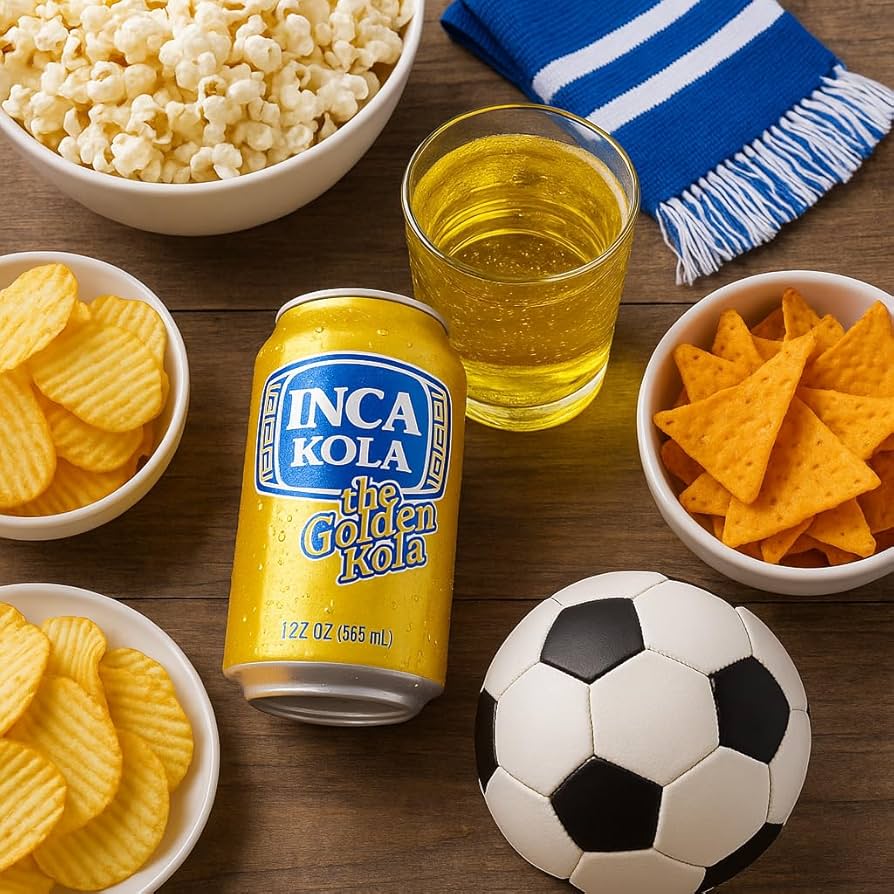Few worldwide soft drink brands can brag of competing with Coca-Cola in their home countries, but Inca Kola, a dazzling yellow soda from Peru, did just that. Its narrative is more than just a beverage. it’s a lively account of national pride, cultural history, and clever marketing. It enabled a local brand to compete with the might of a multinational corporation.
The Origins of Inca Kola: A Drink With Peruvian Roots
Inca Kola was founded in 1935 by Joseph Robinson Lindley. A British immigrant who saw an opportunity to cater to Peruvian tastes. The recipe combined indigenous flavours, most notably hierba luisa (lemon verbena), resulting in a sweet, bubblegum-like taste that was radically different from the colas that ruled elsewhere. Its rich, golden-yellow colour distinguished it visually and symbolically, suggesting Incan gold, an important aspect of Peru’s pre-colonial history.

National Pride and Clever Marketing
Inca Kola has been touted as the beverage of Peruvians since its inception. Advertisements used Incan iconography and emphasised Peru’s rich cultural legacy, appealing directly to the communal feeling of identity. It was more than just a soft drink; it was an expression of patriotism.
This bond was strengthened during family gatherings, national festivals, and moments of celebration. For many, sharing Inca Kola has become synonymous with honouring Peruvian identity.
Going Head to Head with Coca-Cola
Coca-Cola entered the Peruvian market in 1936, just a year after Inca Kola debuted. Despite the global brand’s vast resources and distribution power, Inca Kola gradually increased its dominance.
By the mid-1990s, Inca Kola had surpassed Coca-Cola’s market share in Peru. An incredible success in a world where most local soda brands had long been overshadowed by global competition. Surveys revealed not just increased sales, but also a strong loyalty: Peruvians overwhelmingly chose Inca Kola at home and at big gatherings.
The Partnership that Saved the Brand
However, market power presented corporate concerns. By 1999, the Lindley Corporation, Inca Kola’s parent firm, was facing financial difficulties. Rather than driving Inca Kola out of the market, Coca-Cola took an unusual approach. It paid approximately $200 million for a 50% interest while agreeing to let the Lindley family retain control over local production and marketing.
Coca-Cola’s collaboration is sometimes characterised as a strategic defensive measure. As the company recognises that removing Inca Kola could generate resentment and jeopardise its own market position. As a result, Inca Kola remained visible throughout Peru, outselling classic Coke in some parts while keeping its valued identity.
Today, Inca Kola is a symbol of Peruvian identity.
Even decades after the transaction, Inca Kola continues to thrive. It is ubiquitous in Peru, appearing alongside Coca-Cola in restaurants, supermarkets, and households. The brand is distributed to Peruvian communities all over the world, conveying a sense of nostalgia and pride in one’s hometown.
To many, Inca Kola is more than simply a drink; it embodies the spirit of inventiveness and cultural endurance. Its sweet, distinct flavour and golden colour serve as daily reminders that, even in a globalised world, local tradition can compete with and often even outperform the world’s most well-known brands.







